
To ensure that the complex processes of aircraft taking off, landing and taxiing become more punctual and efficient in the future, and to increase safety, partners from the scientific community and industry in several countries have implemented three SESAR solutions as part of the SESAR JU Integrated Airport Operations (IAO) project. These have now been tested in extensive, large-scale trials at airports in Nice, Budapest and Hamburg. On 19 September 2019 at Hamburg Airport, the German Aerospace Center (Deutsches Zentrum für Luft- und Raumfahrt; DLR) and its project partners presented their research work and the initial results.
“The research focuses on developing innovative functions for controllers to support routing, planning and departure management at airports as well as providing additional safety mechanisms,” says IAO Project Manager Steffen Loth from the DLR Institute of Flight Guidance. “The aim is to examine the current traffic situation and to optimise the scheduling processes in order to prevent delays and enable more efficient flight operations.” The international team specifically explored solutions for three areas of air traffic management at airports by organising large-scale demonstrations designed to support the tasks of tower and apron controllers as a means of ensuring greater efficiency.
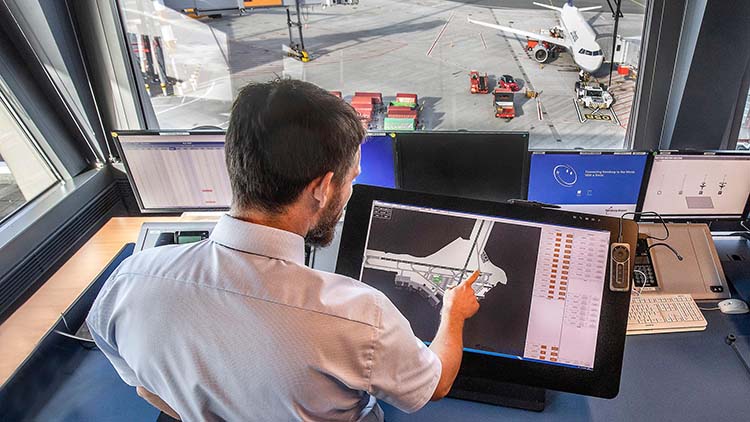
Digital ‘taxi manager’
The first area – automated assistance to controllers for surface movement planning and routing – comprises a route-planning tool that makes automated planning of aircraft routing available to apron controllers. The system calculates taxi routes for each aircraft, which it then proposes to the controllers, although the operator can change them at any time. It reacts continuously to changing circumstances and adjusts its planning accordingly. In addition to increasing efficiency by optimising routes, the aim is to improve the situational awareness of the controllers.
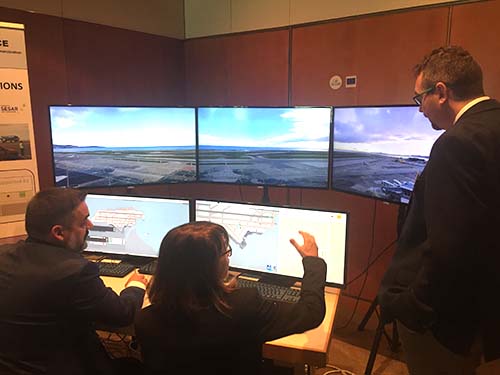
No congestion at departure
The second solution – pre-departure sequencing supported by route planning – builds on the optimised taxi routes and is intended to ensure that engines are ignited at the last possible moment. The more general assumptions that have previously been applied to taxi times are expected to be replaced with more precise values that are calculated for each individual surface movement, depending on the current traffic situation. In addition to more precise departure planning, this also improves fuel efficiency and reduces noise as well as CO2 emissions at the airport, as the engines will only run for as long as necessary.
Enhanced Safety Nets
The third solution – airport safety nets for controllers – draws on available information to enable new ‘safety nets’ at airports. These new safety nets can alert air traffic controllers when traffic deviates from ATC instructions or procedures, enabling prompt reactions. In addition, the system can help detecting conflicting ATC clearances during runway operations.
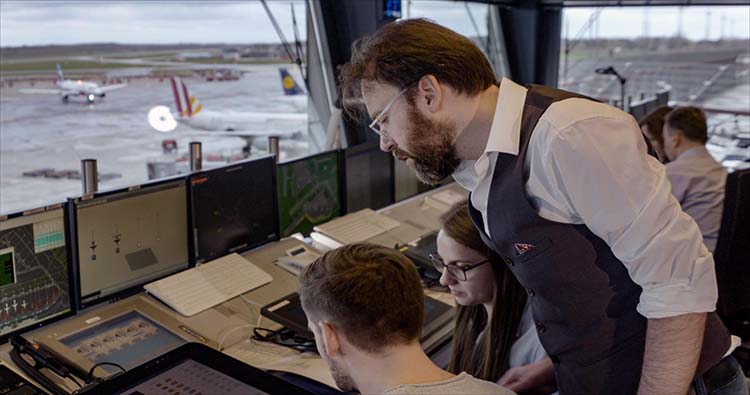
Testing in live operations
“We implemented the innovations considered in IAO during demonstrations at three different airports to ensure the broad applicability of the systems despite significant local differences,” explains Steffen Loth. Hamburg Airport has a system of intersecting, interdependent runways, while Nice Airport has interdependent, parallel runways that experience capacity problems during the high season. Budapest Airport also has a system of interdependent, parallel runways and a complex arrangement of taxiways. Over the course of the project, the participating partners installed the infrastructure for on-site testing and connected the demonstrators to the operational airport systems. Doing so enabled access to live data from flight operations such as the current traffic situation and the associated flight plans. “The tests were performed with local air traffic controllers at all the locations. This meant that the new systems were tested as realistically as possible together with the actual operators, who were therefore able to provide their immediate impressions and assessments,” says Loth.
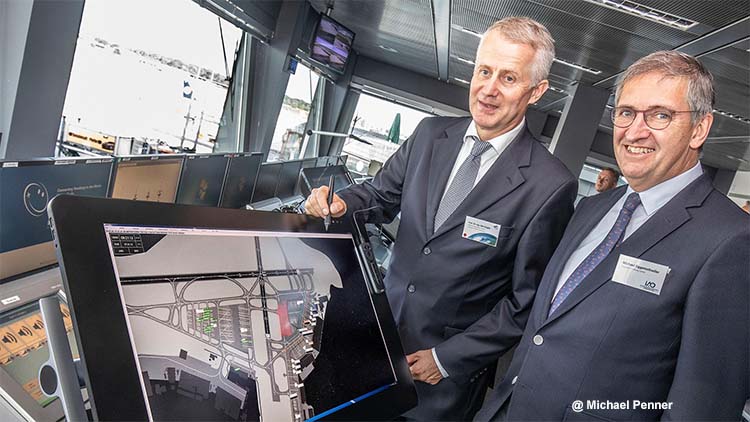
During the presentation of the IAO research project in Hamburg, Michael Eggenschwiler, Chief Executive Officer of Hamburg Airport, said: “We very much appreciate the many years of fruitful collaboration we have had with DLR. As can currently be seen with the innovative developments for optimised surface movements, DLR is able to conduct research under realistic conditions in our ‘Contingency Room’. This is what we call the backup for our apron control, which holds redundant versions of all information and control systems. Here, DLR can directly test the application of the systems in live operations together with our controllers.”
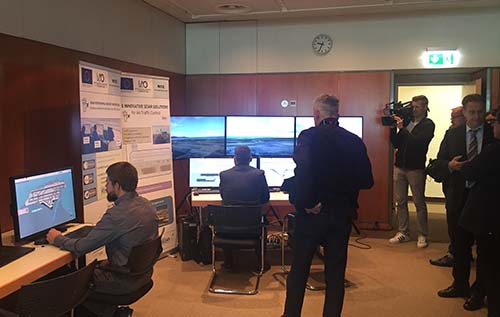
The partners
The Norwegian branch of the global technology company Indra, in collaboration with the Hungarian air traffic control organisation HungaroControl, was responsible for the large-scale demonstration at Budapest Airport. The large-scale demonstration at Nice Airport was carried out by the French Air Navigation Service Provider DSNA (Direction des Services de la navigation aérienne), while the demonstration at Hamburg Airport was coordinated by DLR and executed together with the Norwegian research institution SINTEF (Stiftelsen for industriell og teknisk forskning). DLR is responsible for overall coordination of the IAO project.
This project has received funding from the SESAR Joint Undertaking under the European Union’s Horizon 2020 research and innovation programme under grant agreement No 731787.
